Top 11 Zulip Alternatives for Team Communication and Collaboration
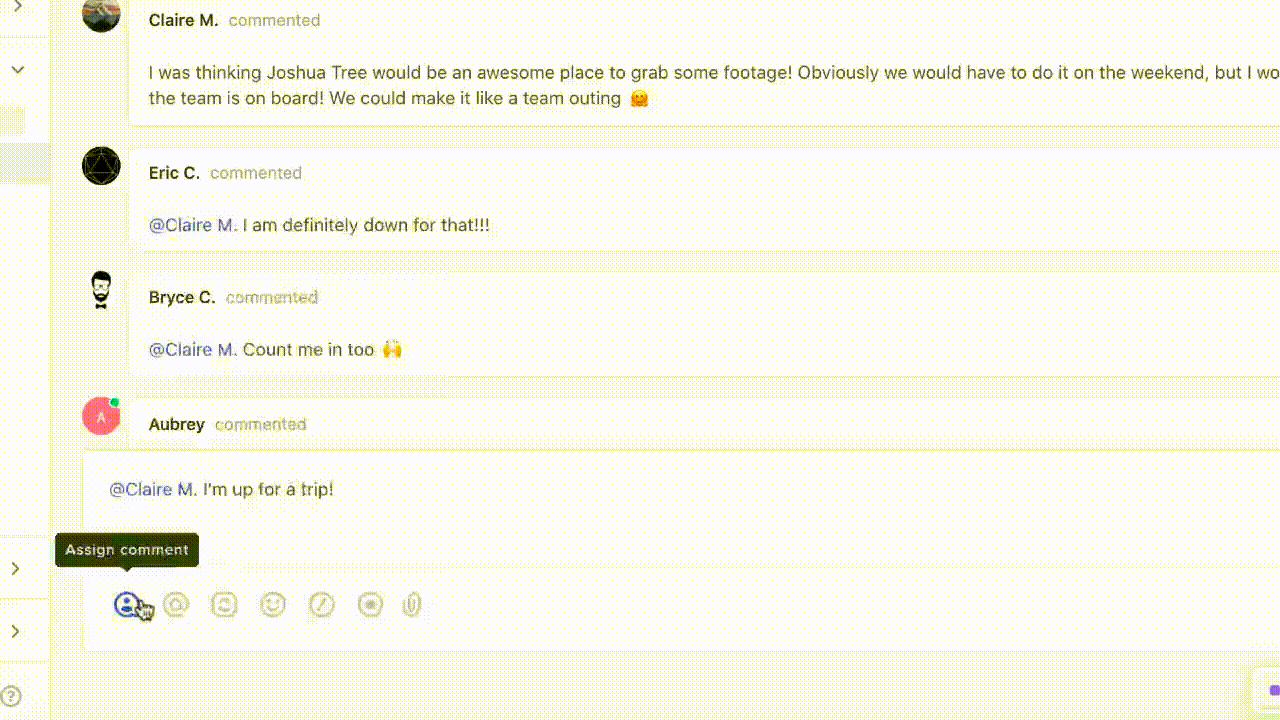
Sorry, there were no results found for “”
Sorry, there were no results found for “”
Sorry, there were no results found for “”

Your team’s productivity hinges on how effectively everyone communicates.
While Zulip’s topic-based threaded conversations work well for async teams, it may fall short if you’re looking for deeper integrations, built-in project management tools, or stronger video conferencing support.
There are plenty of flexible team collaboration platforms out there that could be a better fit for how your team actually works. In this blog, we’ll look at the top Zulip alternatives that help keep communication flowing and projects on track, no matter where or when your team works.
🔎 Did You Know? It can take about 23 minutes to refocus after a context switch. Choosing a platform that keeps topics, tasks, and conversations in one place cuts the noise—so your team stays in flow, not in catch-up mode.
| Tool | Best for | Key features | Pricing |
| ClickUp | All-in-one collaboration; AI-powered Task, Doc, Whiteboard creation right from ClickUp Chat | All-in-one collaboration; AI-powered Task, Doc, and Whiteboard creation right from ClickUp Chat | Free plan available; Customizations available for enterprises |
| Slack | Integrations | Channels, threads, 2,400+ integrations | Free; Paid plans start at $7/month |
| Microsoft Teams | Microsoft 365 users | Office integration, calls, channels | Free; Paid plans start at $4/month |
| Mattermost | Security-conscious organizations | Self-hosting, compliance | Free; Paid plans start at $10/month |
| Rocket.Chat | Self-hosted deployment | Open-source, customization | Free; paid plans start at $8/month |
| Discord | Community building | Voice channels, servers | Free; Customizations available for enterprises |
| Twist | Asynchronous communication | Thread-first, focus-friendly | Free; Paid plans start at $8/month |
| Pumble | Small teams on budget | Unlimited history, channels | Free; Paid plans start at $3/month |
| Zoom | Video-first communication | HD video, Team Chat | Free; Paid plans start at $17/month |
| Flock | Streamlined workflows | Built-in productivity tools | Free; Paid plans start at $3/month |
| Google Workspace | Google ecosystem users | Gmail, Drive, Meet integration | Paid plans start at $3/month |
Our editorial team follows a transparent, research-backed, and vendor-neutral process, so you can trust that our recommendations are based on real product value.
Here’s a detailed rundown of how we review software at ClickUp.
Zulip is an open-source team communication software that organizes conversations into streams and specific topics. Unlike traditional messaging apps that structure chats chronologically, Zulip uses a unique threading system that combines the immediacy of real-time communication with the organization of email threading.
The platform offers features like:
Zulip is particularly popular among developer teams and organizations that prefer open-source alternatives with strong privacy controls.
👀 Did You Know? A Finnish doctor built the first team chat. In 1988, Jarkko Oikarinen created Internet Relay Chat (IRC) while working at a hospital in Finland to improve communication among doctors.
Zulip’s streams and topics model offers a distinctive approach to team communication. Still, this unique system has several notable drawbacks that may impact your team’s productivity and collaboration effectiveness.
As teams scale and communication needs become more complex, these limitations often become more pronounced, driving organizations to explore alternative platforms.
🧠 Fun Fact: The term “Zoom fatigue” gained popularity during the COVID-19 pandemic as people increasingly relied on video conferencing for work, education, and social interactions. Coined by Stanford professor Jeremy Bailenson, the term describes the exhaustion caused by virtual meetings. It’s fueled by constant eye contact, staring at your own face, limited physical movement, cognitive overload, lack of casual breaks, and the pressure to stay “on” all the time.
Here is our curated list of the best alternatives to Zulip. These tools can help you discover other systems to improve collaboration and communication between diverse teams.
Disconnected communication tools stop at conversation. ClickUp, on the other hand, is the world’s first Converged AI Workspace that combines project management, knowledge management, and chat—all powered by fully contextual AI that helps you work faster and smarter.
It’s especially valuable for remote teams, developers, businesses, and professionals who need efficient, real-time communication tightly integrated with their workflows.
The problem with modern chat apps is that they live separately from where you work. You follow up with a coworker on a task, get an update, and then manually update the task to reflect the update. Or else, you’re scouring chat threads line by line just to get the context you need to get work done. All of that ends with ClickUp Chat.
As ClickUp’s built-in messaging app, you can turn chats into ClickUp Tasks instantly, plus assign them to the right person and set a deadline. This makes it easy to capture action items as they come up in conversation, so nothing slips through the cracks. You can also use AI to summarize threads, assign messages, or find related tasks—all directly from Chat.
Because ClickUp unifies team chat with task management, every discussion naturally transforms into assigned work with clear ownership and deadlines.
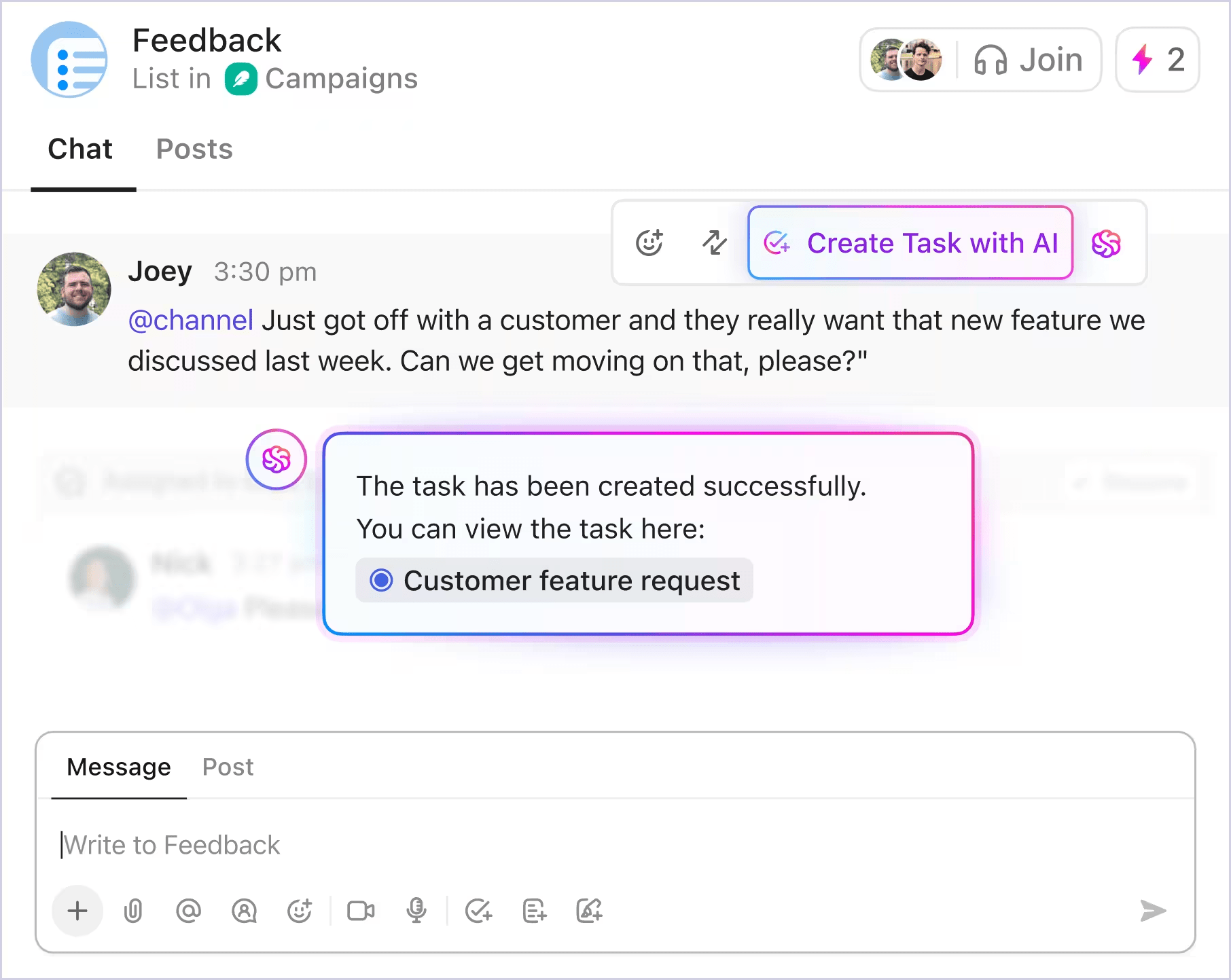
But that’s not all. You can create ClickUp Docs and ClickUp Whiteboards right from your chat window, without breaking the flow, all with ClickUp AI.
ClickUp’s SyncUps feature further enhances team communication by integrating meetings into your workflow.
Unlike traditional conferencing tools that exist in isolation from your work, SyncUps combine real-time video meetings with collaborative agendas, notes, recordings, and automatic task creation—all directly embedded in your project’s context.
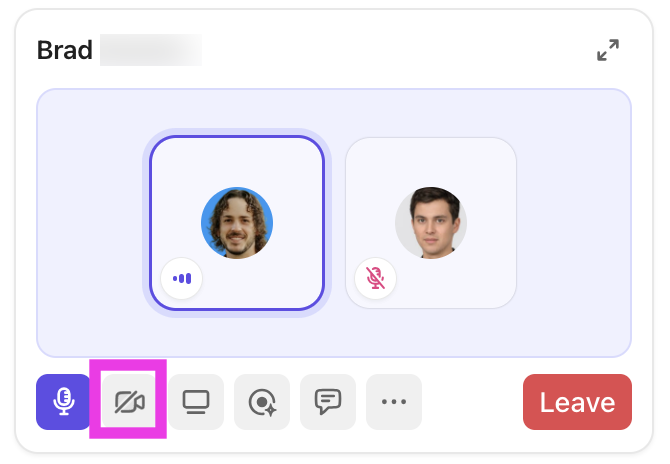
With SyncUps, you can create structured meeting templates, add agenda items collaboratively before the meeting starts, record key discussions for later reference, and instantly convert talking points into assignable Tasks.
Unlike standalone messaging apps like Zulip, you can also share documents, images, and files from your complete integrated work ecosystem directly in ClickUp Chat, so resources are always at your fingertips. This makes the critical stuff easily searchable and accessible. This search functionality is unified across Chat and Tasks and is not limited to chat history.
And if someone asks a question on the group chat, just let your ClickUp Agent answer it. Teams can quickly get answers to workspace questions, generate content ideas, or have repetitive tasks handled with ClickUp AI deeply embedded into Chat. This keeps conversations productive and focused on high-value work.

ClickUp Brain enhances communication between diverse teams by bringing AI capabilities directly into your conversations. It helps you draft responses, summarize lengthy discussions, and generate creative solutions—all within the chat context.
ClickUp Brain MAX, a dedicated desktop AI companion, unifies chat, search, and automation across all your work apps and the web. With multi-model AI chat, contextual answers, and voice-to-text, Brain MAX helps you create, find, and automate work faster—ending the chaos of disconnected AI tools.
With integrated chat, project management, direct messaging, file sharing, and built-in video conferencing, ClickUp streamlines workflows, reduces app fatigue, and ensures that your team’s conversations always lead to action.
A G2 review says:
ClickUp has reduced the chaos of managing multiple teams, platforms, and projects. I no longer need to switch between apps for chat, docs, tasks, and updates. It’s made my business more efficient, aligned, and productive—especially in a fast-paced office like ours.
💡 Pro Tip: Consider using ClickUp features like “@mentions” to get someone’s direct attention, but avoid overuse to prevent notification overload and unnecessary distractions. Practicing good chat etiquette fosters a respectful and efficient communication environment, enhancing team collaboration and productivity.
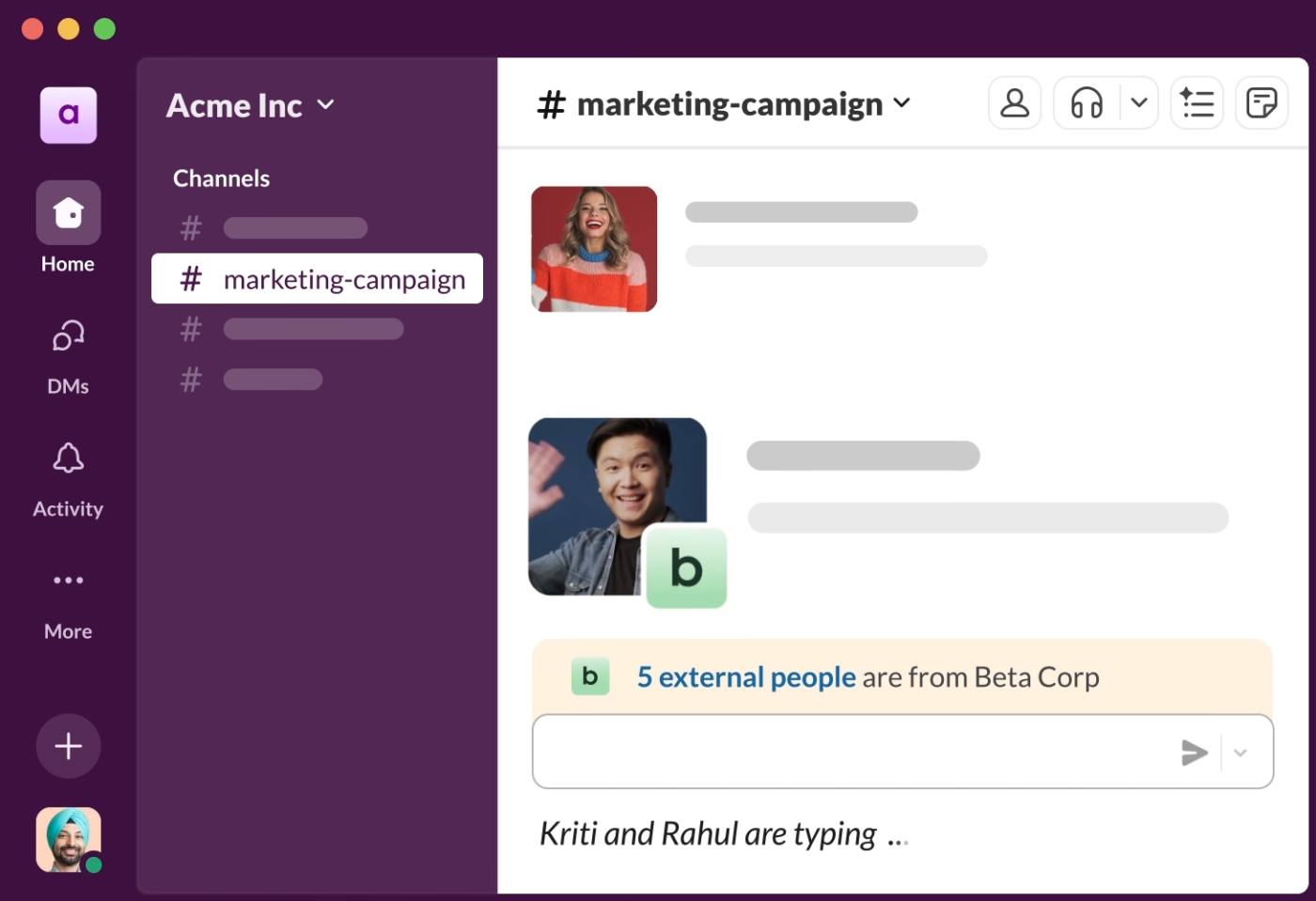
Slack remains a popular choice for team communication, organizing conversations into channels for projects, topics, or departments.
Its extensive integration ecosystem connects with over 2,000 third-party apps, streamlining workflows directly within conversations. Unlike Zulip’s topic-focused threads, Slack uses channels and threads to reduce clutter.
Slack’s workflow builder enables custom automation without coding, while its AI-powered search and summarization tools help teams find information and catch up on missed discussions. It also offers a solid search functionality across all messages and files, huddles for quick audio/video calls, and canvas docs for collaborative documentation.
A Capterra review says:
I appreciate the ability to create multiple groups, which helps organize communication effectively. Additionally, I find the huddle feature particularly useful; its informal nature allows for quick, one to one interactions that can resolve issues more efficiently than text messages.
📮 ClickUp Insight: 64% of employees occasionally or frequently work outside their scheduled hours, with 24% logging extra hours most days! That’s not flexibility—that’s never-ending work. 😵💫
Pigment, a business planning platform, switched to ClickUp to solve their fragmented communication challenges. Using ClickUp Chat, ClickUp Tasks, and ClickUp Automations, they reduced communication overhead by 40% and improved team communication efficiency by 20%, accelerating their development cycles.
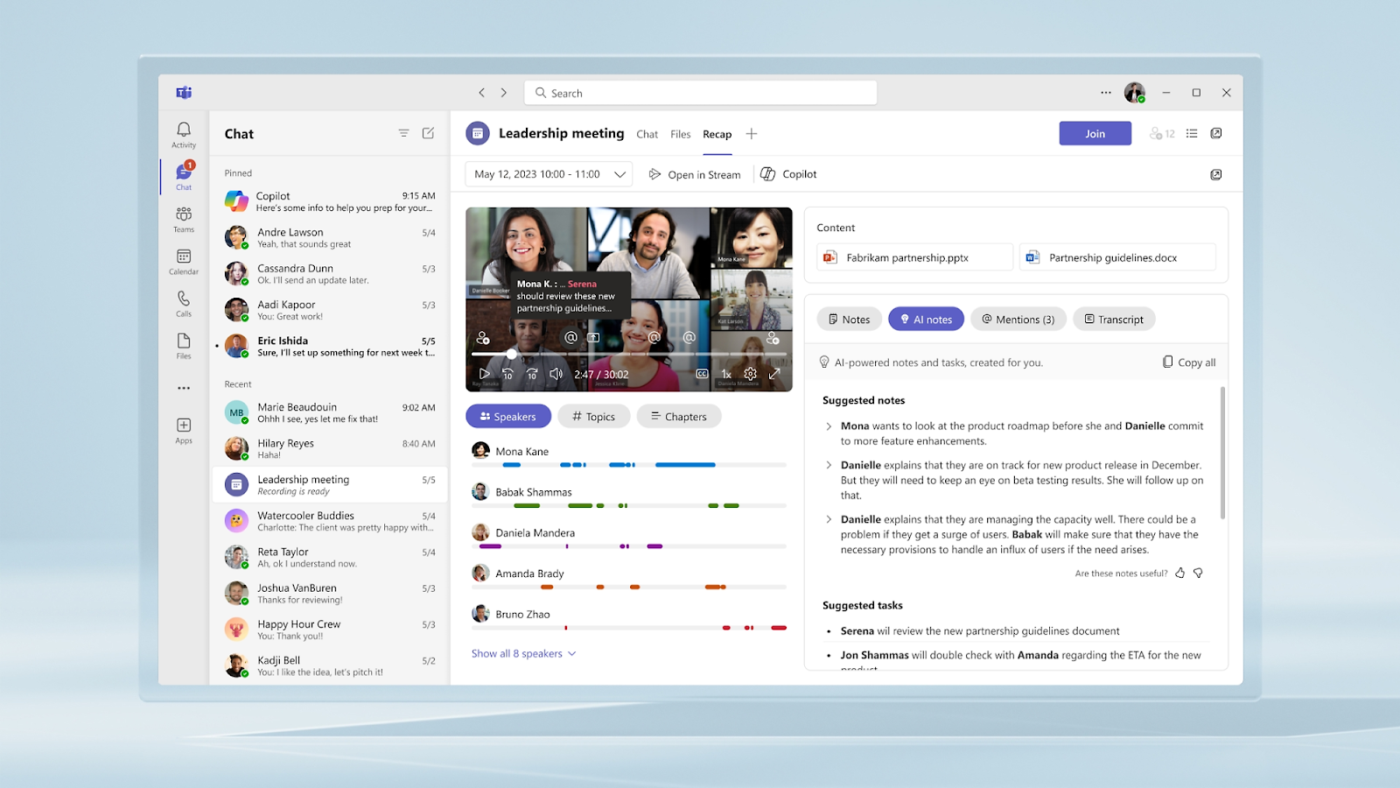
From casual chat to document collaboration, Microsoft Teams eliminates the boundaries between communication and productivity by deeply embedding Office applications into conversations. Teams lets you discuss things like quarterly projections while viewing the actual Excel file, making decisions quicker and more informed, as long as you’re working within the Microsoft 365 ecosystem.
For these organizations, it brings chat, files, and meetings into one space. Teams also offers a comprehensive collaboration hub with deep integration into Microsoft’s productivity suite.
A G2 review reads:
I really like that Teams keeps everything in one place — chats, meetings, files, even task lists. It’s super helpful when working with a team because you don’t have to constantly switch between different apps. I also like how it connects with Outlook and other Microsoft tools, so scheduling meetings or sharing documents is really easy. It keeps things organized and helps me stay on track with projects.
🧠 Fun Fact: The first set of 176 emojis was created in 1999 by Japanese designer Shigetaka Kurita for NTT DoCoMo’s mobile internet platform. These emojis, used frequently in workplace chats today, aim to enhance digital communication by adding emotional nuance.
📖 Also Read: Top Microsoft Teams Alternatives & Competitors

“How can we enable modern collaboration without compromising security?” This question challenges security-conscious organizations daily. Mattermost addresses this through its self-hosting capabilities and enterprise-grade security features, which provide complete data sovereignty. It does this without sacrificing the collaborative experience teams expect.
Mattermost offers an open-source team communication platform with enterprise-grade security and compliance features. Similar to Zulip’s commitment to privacy, Mattermost focuses on providing a secure, self-hosted alternative to cloud-based chat platforms.
A G2 review reads:
I like that Mattermost is open-source and offers full control over deployment and data security. It’s great for enterprises with strict compliance needs. The interface is clean, supports threaded conversations, and integrates well with DevOps tools like Jira and GitLab. Real-time messaging and file sharing are smooth, and it’s ideal for remote teams.
📮ClickUp Insight: Only 10% of our survey respondents use voice assistants (4%) or automated agents (6%) for AI applications, while 62% prefer conversational AI tools like ChatGPT and Claude. The lower adoption of assistants and agents could be because these tools are often optimized for specific tasks, like hands-free operation or specific workflows.
ClickUp brings you the best of both worlds. ClickUp Brain serves as a conversational AI assistant that can help you with a wide range of use cases. On the other hand, AI-powered agents within ClickUp Chat channels can answer questions, triage issues, or even handle specific tasks!
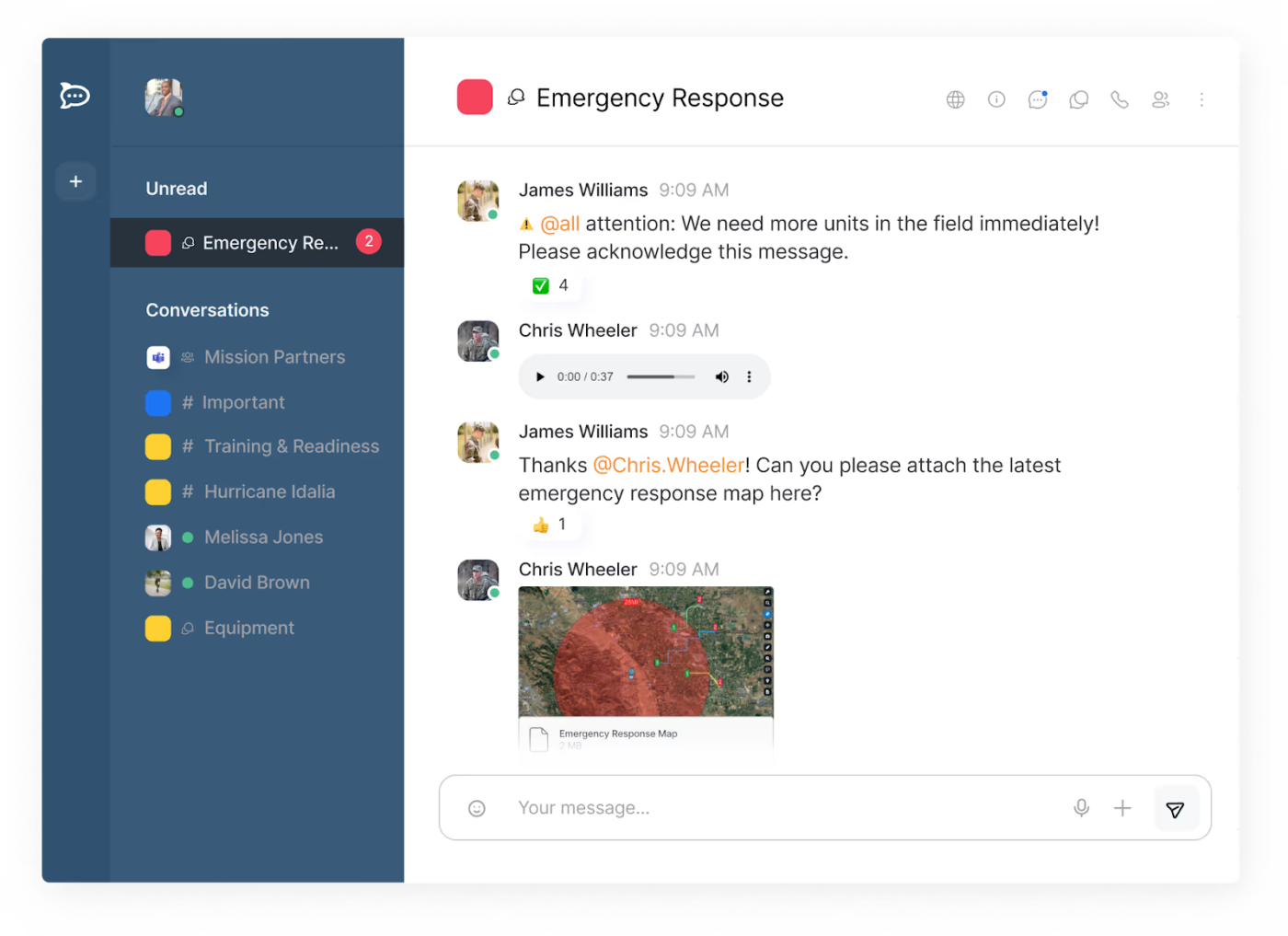
Self-hosting gives organizations complete control over their communication data, and Rocket.Chat makes this possible by keeping everything within your own infrastructure. This setup is handy for teams with strict security requirements or those needing a highly customizable platform.
Unlike cloud-only tools that lock you into predefined features, Rocket.Chat offers the flexibility to build a collaboration experience that fits your team. Like Zulip, it gives organizations control over their communication stack while still supporting a full range of team chat features.
A Capterra reviewer says:
The customization you can do, and the simplicity into adding a live chat widget into your web app in the way you like without importing any extra modules, you just run a JavaScript script in your web app. And the functionality is so good but to find how to correctly use them might be a bit hard 🙂

Discord is a versatile communication platform, supporting both text and voice channels within customizable servers. Originally built for gamers, it now serves diverse communities with features like high-quality screen sharing, Go Live streaming, and Stage Channels for large audio events.
Discord offers rich text formatting, custom emojis, role-based permissions for granular access control, and bots that add functionality from moderation to music playback.
Unlike Zulip’s structured threading, Discord organizes conversations into servers, channels, and threads with powerful voice chat capabilities.
A Capterra review says:
Easy to set up, use and communicate with colleagues. Exceptional interface for both school and business.
📖 Also Read: Best Discord Integrations (Reviews & Pricing)
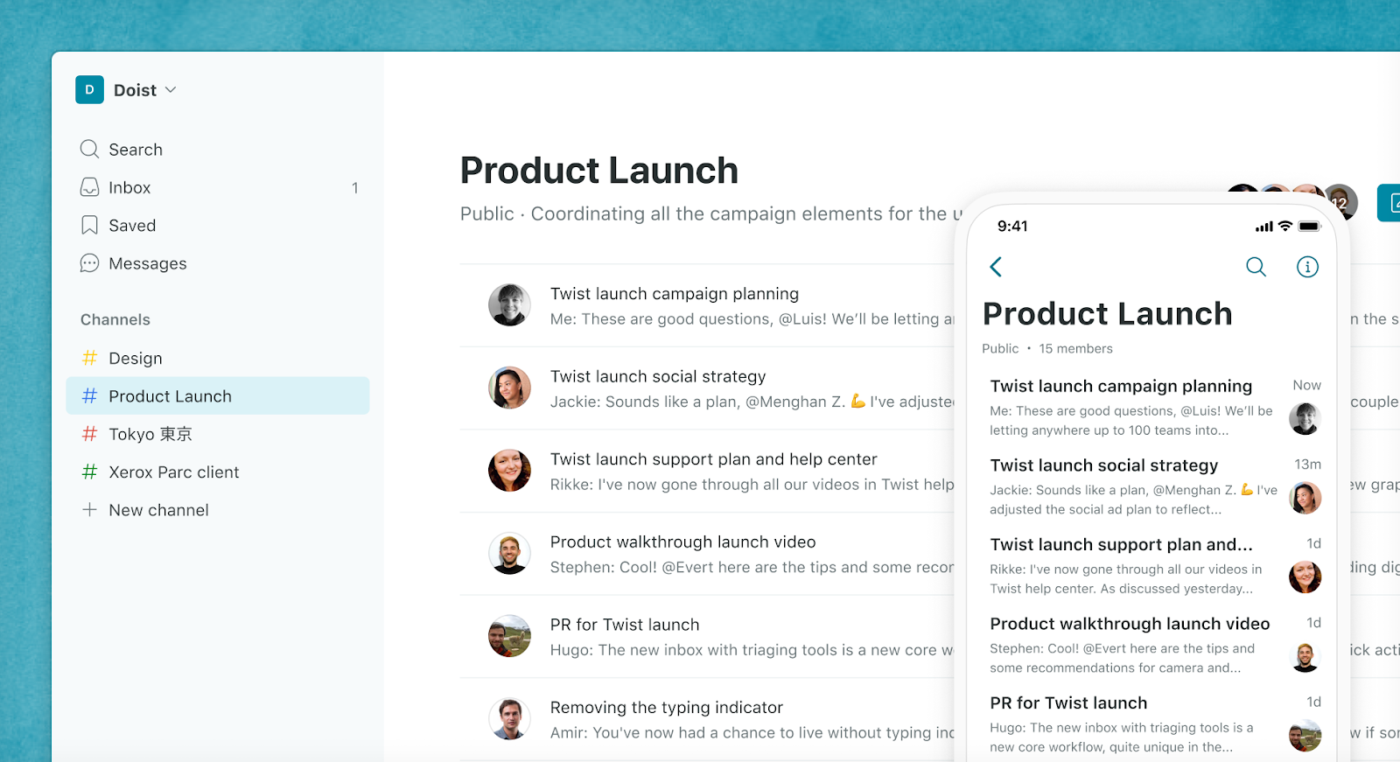
The constant ping of notifications, the pressure to respond immediately, and the feeling that you can never catch up? Twist ends with a notification system that encourages focused work by batching updates, and the inbox feature helps users catch up on important threads without scrolling through endless chat logs.
Twist champions asynchronous communication, organizing discussions into threads rather than chaotic real-time streams. Similar to Zulip, Twist organizes conversations into channels and threads, but with an even stronger emphasis on focused and thoughtful discussions. Each thread maintains a clear topic with chronological messages, making it easy to follow conversations even after time away.
The platform features channels for different teams or projects, direct messaging, and comprehensive search across all conversations.
A Capterra review says:
The whole team loved it because now instead of being distracted every time someone sends a message in some channel, people could finally spend time doing productive work and checking their email and Twist notifications when they want.
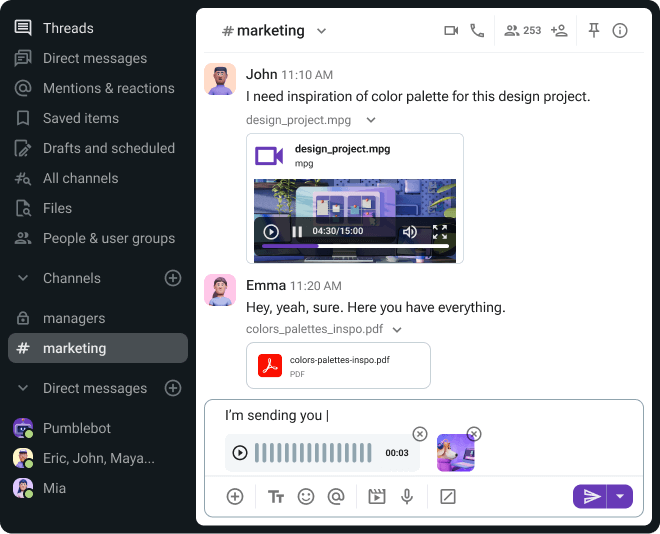
Budget-conscious teams love Pumble for its unlimited message history and core communication features, which come without enterprise-level pricing.
Instead of compromising on essential functionality, small teams can deploy a complete communication solution that grows with their needs. This Slack alternative offers a cost-effective team communication platform with unlimited message history, even on its free plan.
Unlike Zulip’s specialized threading approach, Pumble offers a straightforward, Slack-like experience that focuses on essential communication features without a premium price tag.
A Capterra review says:
It’s basically Slack, but better. And the paid option is sensibly priced, so that’s fantastic too.
📖 Also Read: Pumble Alternatives for Chat & Team Communication
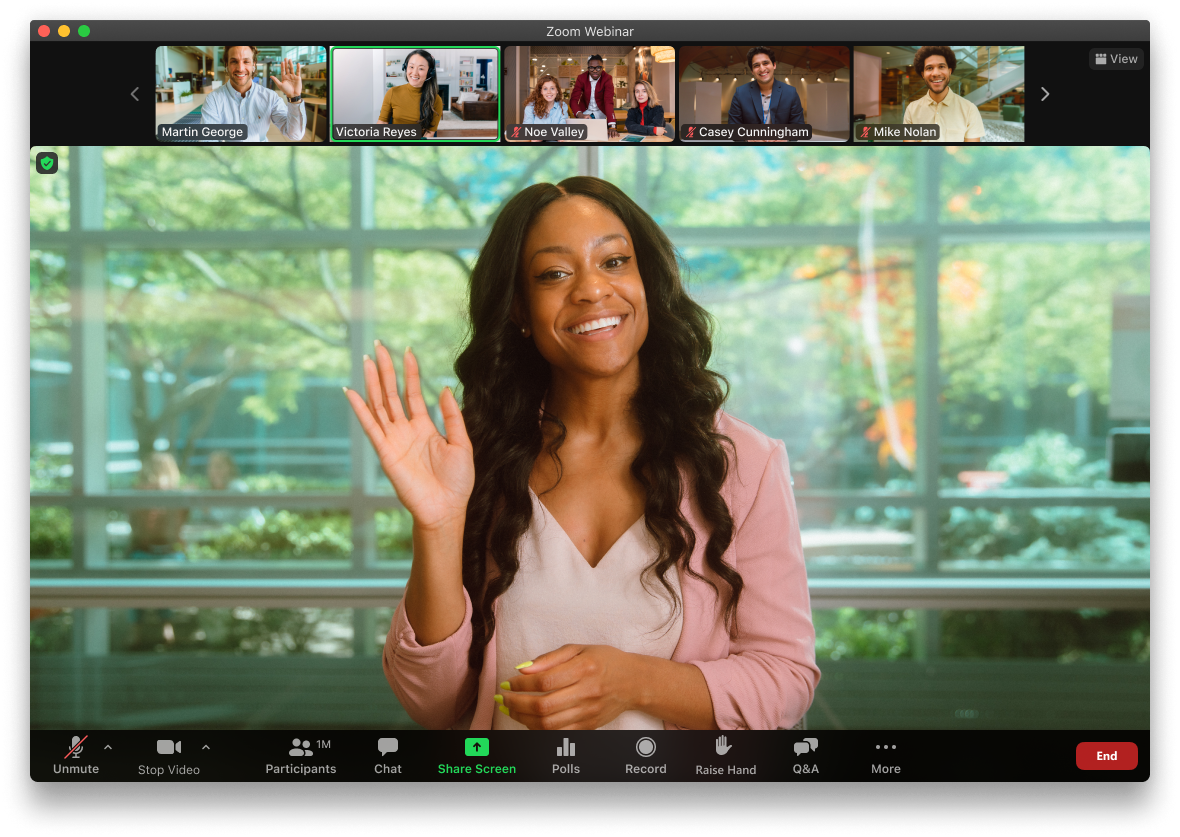
Text messages can only go so far—tone, emotion, and nuance often get lost in translation. That’s why conversations over chat can quickly spiral into long threads of back-and-forth clarifications. It slows everyone down.
Zoom gets this. It puts face-to-face interaction front and center, making it easy for teams to transition from chat to video with zero friction—no need to switch apps or find meeting links. While Zulip focuses on structured text, Zoom takes a more real-time, human approach with video as the star and chat as a helpful sidekick.
A G2 reviewer says:
The platform is highly reliable, even for large meetings and features like AI companion, breakout rooms and persistent whiteboards make collaboration more structured and efficient.
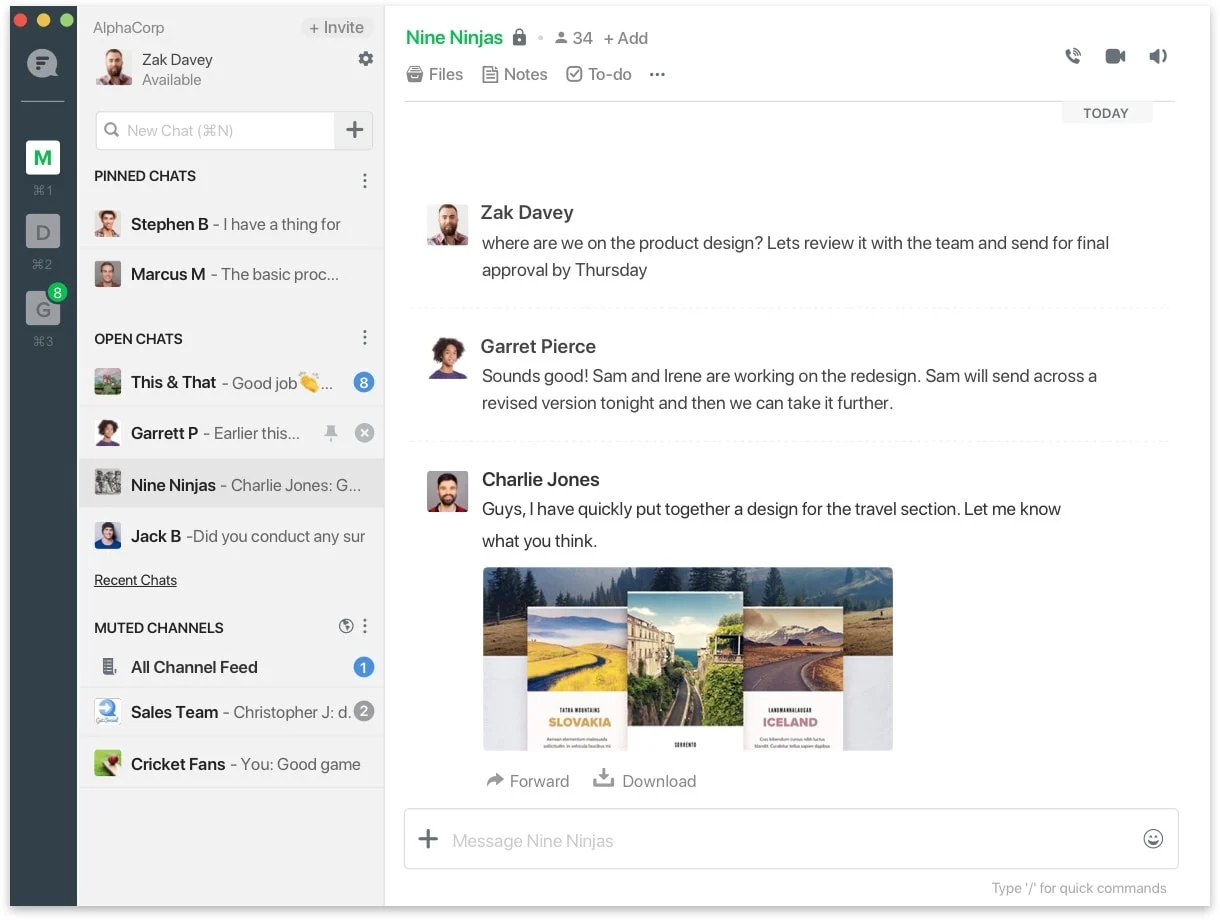
Every chat conversation ends with the same problem: “Who’s doing what by when?”
Flock solves this fundamental collaboration challenge by embedding productivity tools directly where conversations happen. When your team chat naturally extends into polls, tasks, and reminders, the workflow remains unbroken, and accountability becomes automatic.
Flock combines direct messaging with integrated productivity tools to create seamless workflows. Unlike Zulip’s focus on structured threading, Flock emphasizes practical efficiency. It surrounds conversations with action-oriented features that help teams move from discussion to execution without switching contexts.
A G2 review reads:
Easy to install and drive, with low need of help from the management for almost any part. It is also easy to modify and manage for the submission of content and other things due to the interface.
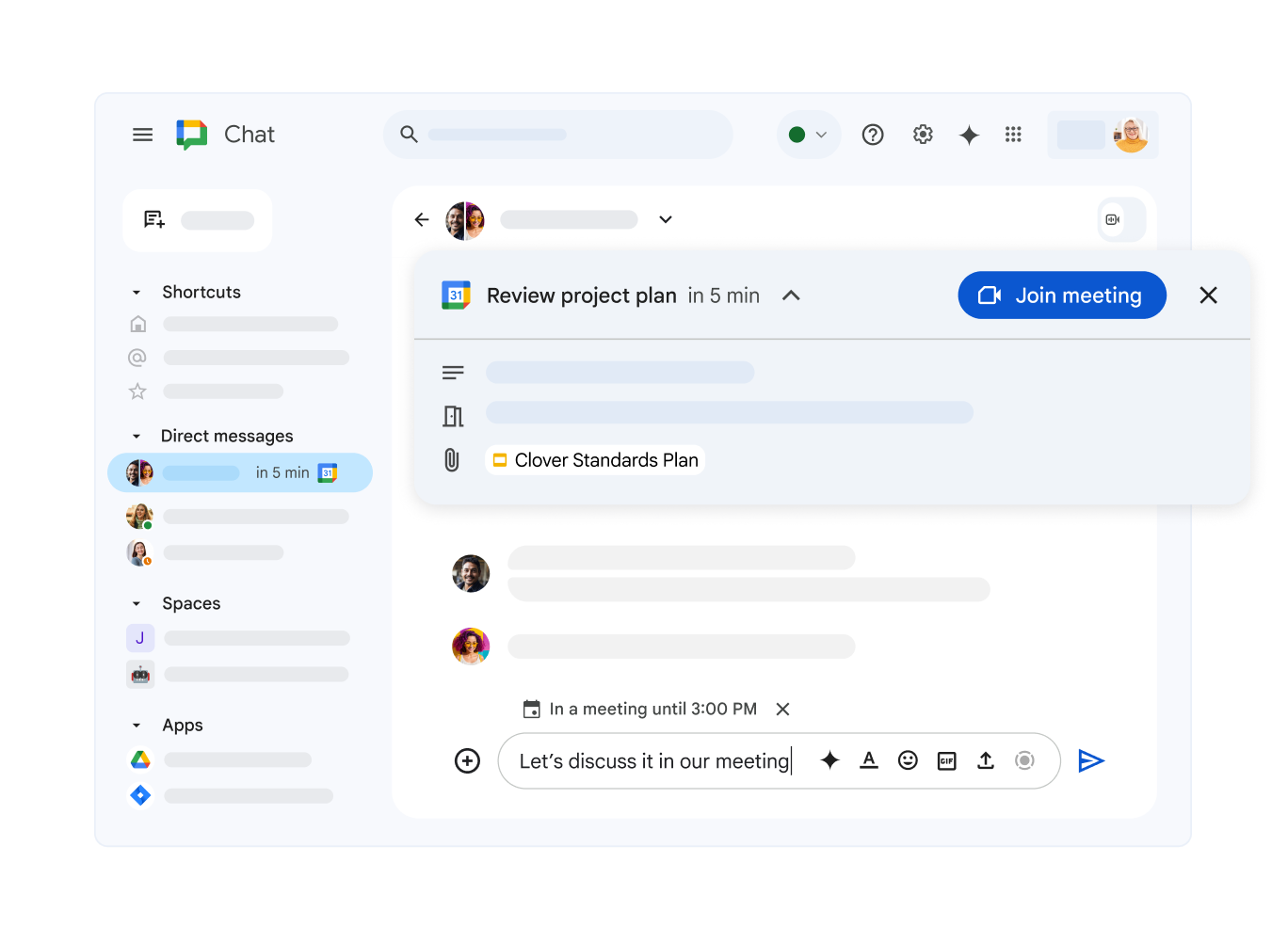
Google makes teamwork feel natural by putting chat right where the work is—inside Gmail, Drive, Docs, and Meet. That means fewer app switches and more conversations happening in context, not in random silos. It cuts down the usual distractions and keeps everyone focused.
Google Chat is part of this setup. It’s built into Google Workspace, so if your team already uses Google tools, it’s a good fit. Unlike Zulip’s more structured threads, Google Chat is seamless and straightforward, allowing teams to talk without disrupting their workflow.
A G2 reviewer says:
The seamless integration across tools like Gmail, Drive, Docs, Sheets, and Meet is what truly stands out. It enables our team to collaborate in real time, whether we’re drafting documents, sharing files, or scheduling meetings.
Each platform has its strengths, but ClickUp stands out as a well-rounded option for communication and collaboration. It’s a strong alternative to Zulip, especially for remote teams, developers, and businesses looking for an all-in-one workspace.
Unlike single-purpose communication tools, ClickUp eliminates the fragmentation that occurs when conversations take place on one platform while work is done on another.
Try ClickUp for free today and experience the power of truly unified team communication and project management!
© 2025 ClickUp